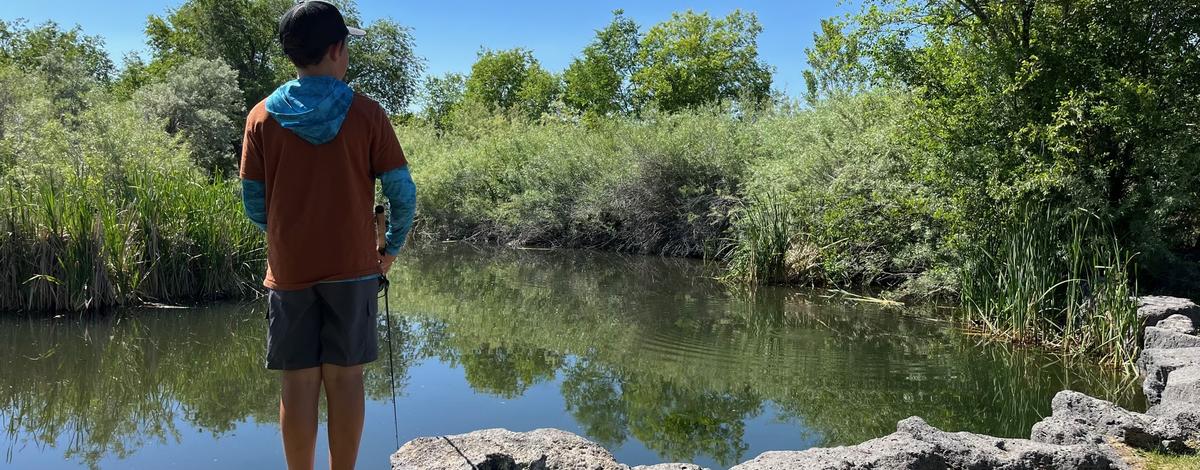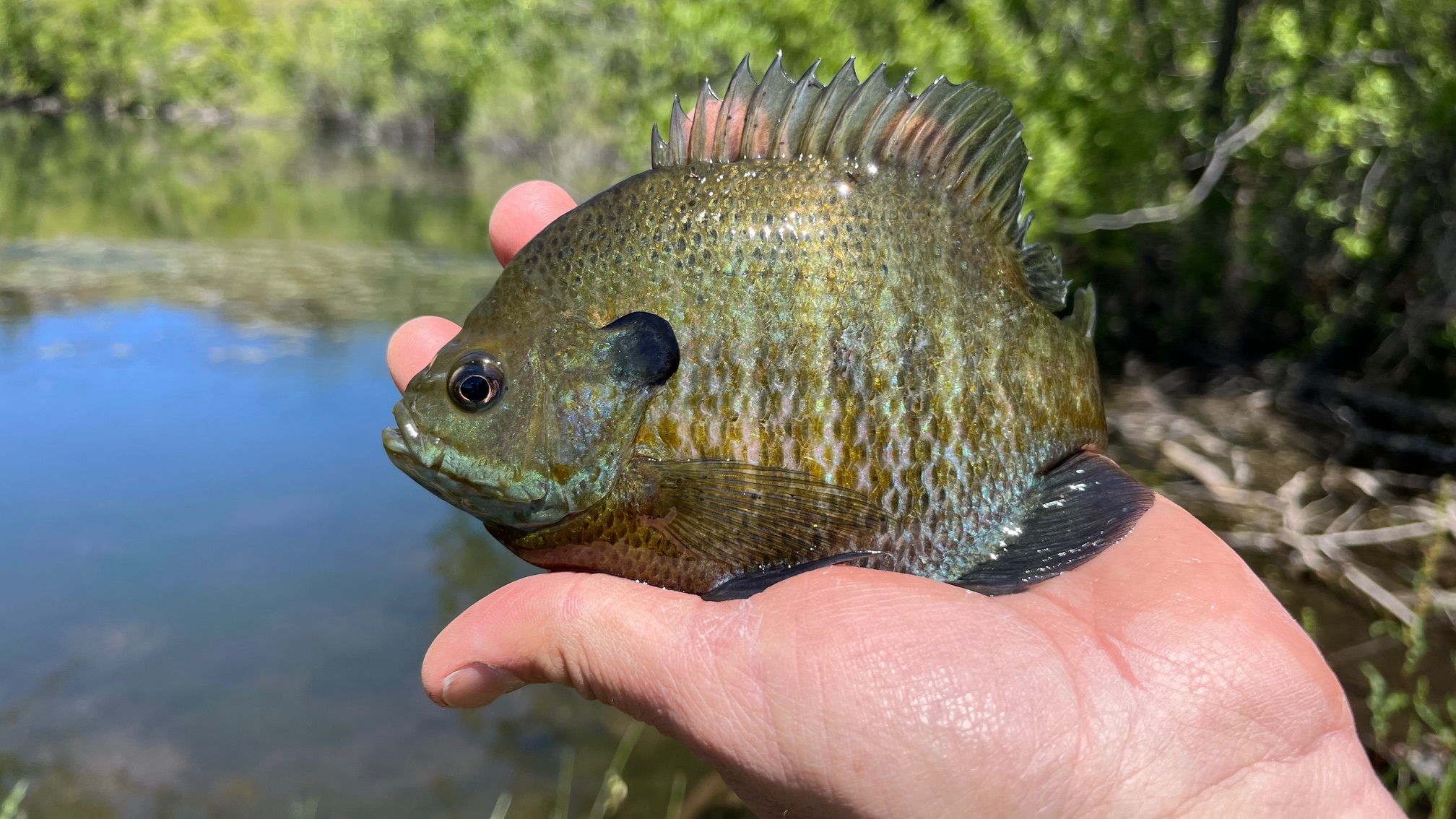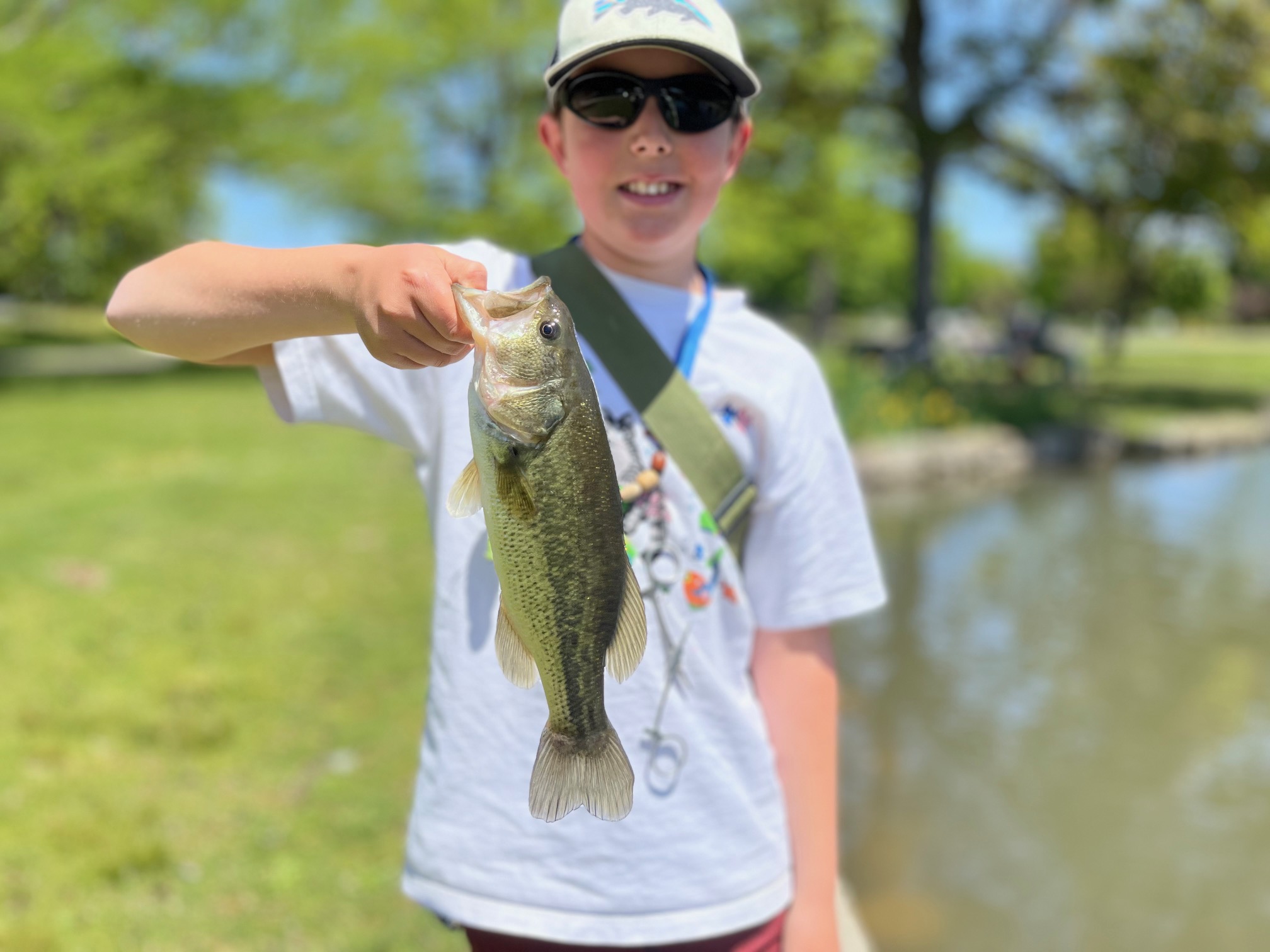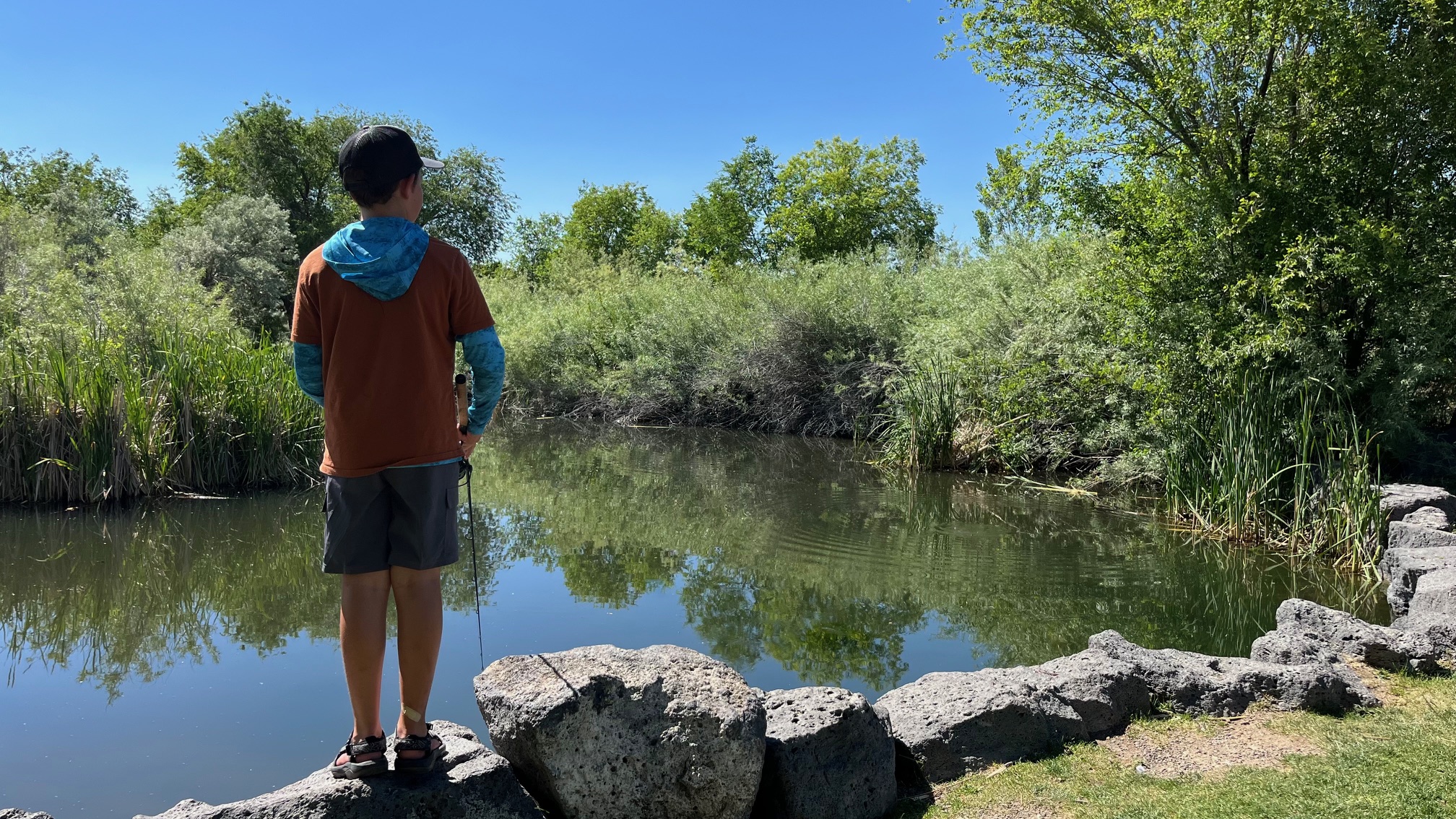About the author: Martin Koenig is Idaho Fish and Game's Sportfishing Coordinator, and an avid pond angler with his son, Miles.
Urban ponds are a huge resource for Idaho anglers. There are over 60 just in the Southwest Region alone, and they’re common throughout the state. If your local city park has a pond, chances are good to excellent it has some fish in it. Fish and Game stocks rainbow trout in local ponds about half the year while water temperatures are cold enough. In addition, most ponds also have some "warmwater" fish, such as bass, sunfish (bluegill, pumpkinseed), and you might even find a yellow perch or crappie.




